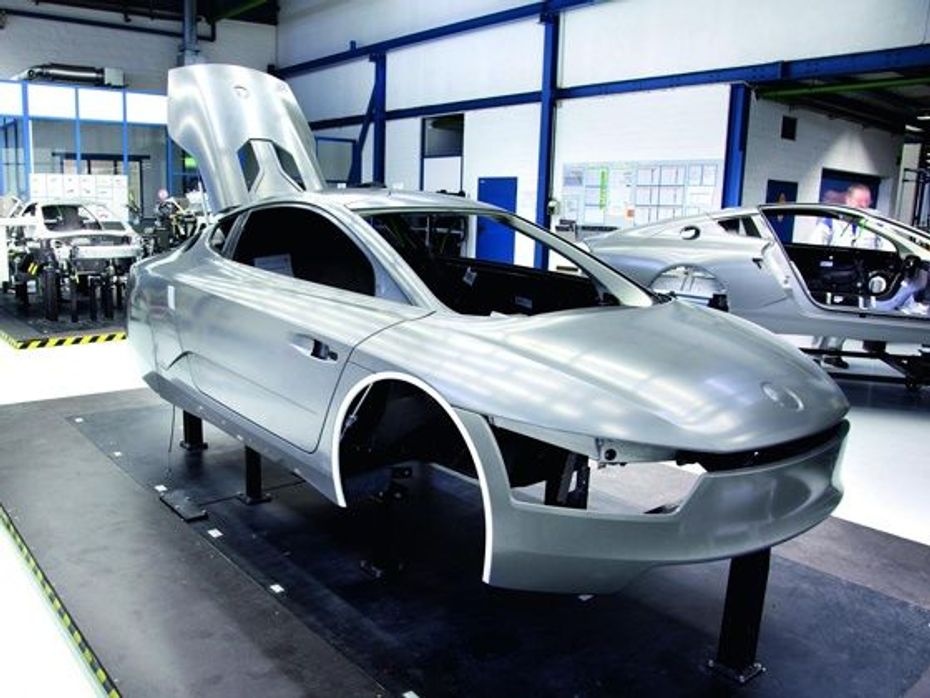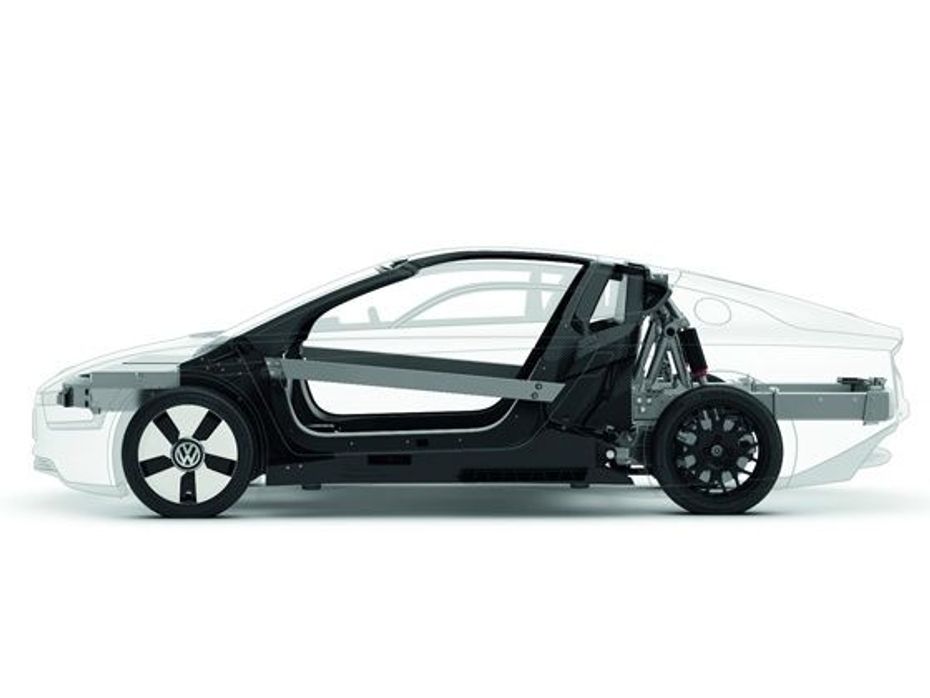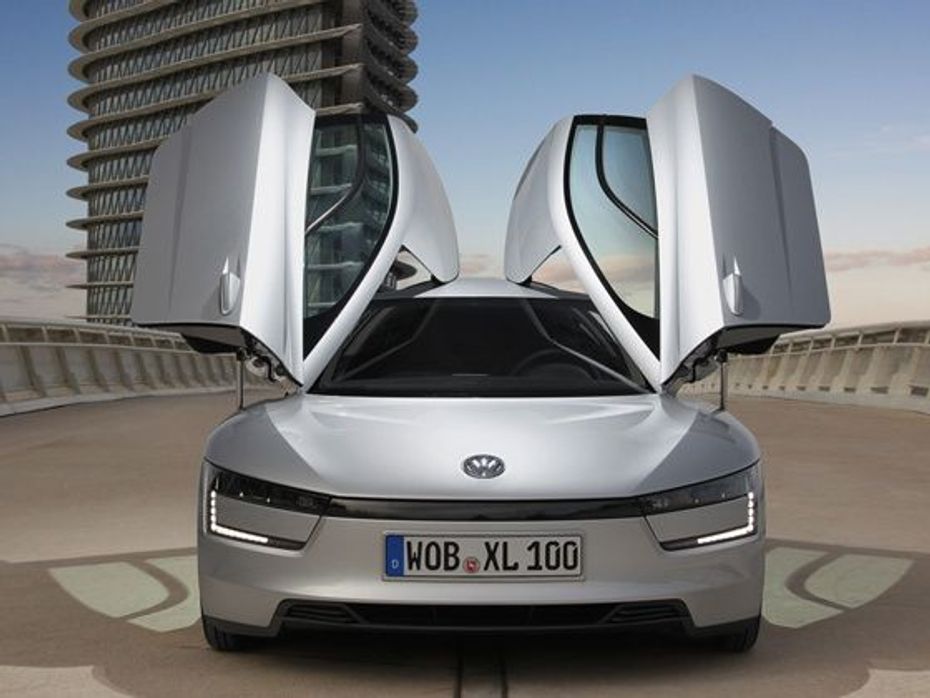
Volkswagen Taigun And Virtus Gets New GT Variants, 1-litre Engine Now...
- Mar 21, 2024
- Views : 2129


Building a truly focused environment-friendly hybrid electric vehicle is a tough job. All the guidelines for building a vehicle have to be taken and analysed as to how every single detail can be altered to make the vehicle as light as possible without compromising on safety and comfort.
When it comes to the XL1, Volkswagen’s efforts in this regard have paid off significantly. The XL1 hybrid’s body weighs just 29 per cent of the car’s total weight whereas a conventional car’s body accounts for roughly 40 per cent of the car’s total weight.
The tremendous saving in weight is down to the use of carbon fibre reinforced polymer (CFRP) in the construction of the monocoque chassis of the VW XL1. The monocoque chassis supports the vehicle’s structure and acts as a safety cell for its passengers with its integrated rollover protection and lateral crash elements in the floor area while the doors accommodate side impact protection beams. The chassis itself weighs only 89.5 kgs!
Further weight saving measures includes side windows made of polycarbonate that weigh 5.2 kgs as compared to the 7.8 kgs that conventional windows weigh. The Volkswagen XL1 does not have power steering to save weight as the axle loads were significantly reduced due to the small and efficient powertrain and clever engineering. The XL1’s steering system weighs a mere 5.1 kgs as compared to the average 15 kg weight of a conventional power steering system. Even the seats are made out of CFRP to weigh half as much as a conventional car seat.
But saving weight alone is not enough to make a car as efficient as it can be as far as the construction of a vehicle is concerned.
Volkswagen has worked on various aspects in the exterior design of the XL1 to make it as aerodynamically slippery as possible in order to reduce the coefficient of drag of the plug-in hybrid.
Air resistance is a major cause of concern as it requires a vehicle to use more energy to cut through the air and move forward. The faster a car goes the more energy it requires to cut through the air.

In order to make sure that the XL1 uses the least energy possible to cut through the air the vehicle’s front end has a rounded design, so do the windshield and roof. The outside rear view mirrors (ORVMs) have been replaced with cameras and the car’s rear end has been narrowed to further streamline the aerodynamics.
Another visible aerodynamic friendly measure is the fairings over the rear wheel housings to reduce airflow in the wheel arch which generates lift and increases drag.
Aerodynamic measures that are not visible include air displacers and dispersers on the wheels reduce airflow in front of and behind the wheels to further reduce drag. Air vortex generators on the front wheels prevent the air stream from getting caught in
the wheel housings.
The underbody of the XL1 gets full fairing while a rear diffuser reduces the total rear area. A groove between the tailights further reduces air resistance. The cooling air is also passed through the engine compartment in order to avoid the need for air vents on the sides or underbody of the car.

The Volkswagen XL1’s light weight construction combined with its clever aerodynamics and simplistic design has resulted in quite an amazing vehicle that showcases how efficient a proper hybrid electric vehicle can be, if the boundaries of automobile construction are pushed.
The XL1 is a benchmark in its own right and other car makers can learn look at it for inspiration when it comes to building efficient hybird electric cars. After all, it does deliver fuel efficiency that exceeds that of the most fuel efficient commuter motorcycles of the moment.
Also read: Volkswagen XL1 TwinDrive Technology

Volkswagen Taigun And Virtus Gets New GT Variants, 1-litre Engine Now...

VW ID.4 Electric SUV Revealed, Hyundai Ioniq 5 Rival Launch Confirmed...

Volkswagen Virtus GT Plus Sport VS Hyundai Verna Turbo: Turbo-petrol...

Unlike Skoda, Volkswagen India Won’t Have A Sub-4 Metre SUV...

Maruti Suzuki Rock N Road: Redefining the SUV Experience

10 Lucky People To Win Gift Hampers With Maruti Suzuki Celerio Lucky...

Bosch Car Service: Your Trusted One-stop Destination for Car...

2024 Mahindra XUV300 Facelift Looks Production Ready In This Spy Shot

3 New Major Design Details Mahindra XUV 3XO Will Pack Over...

You Can Now Name Skoda India’s Upcoming Sub-4 Metre SUV
India's largest automotive community